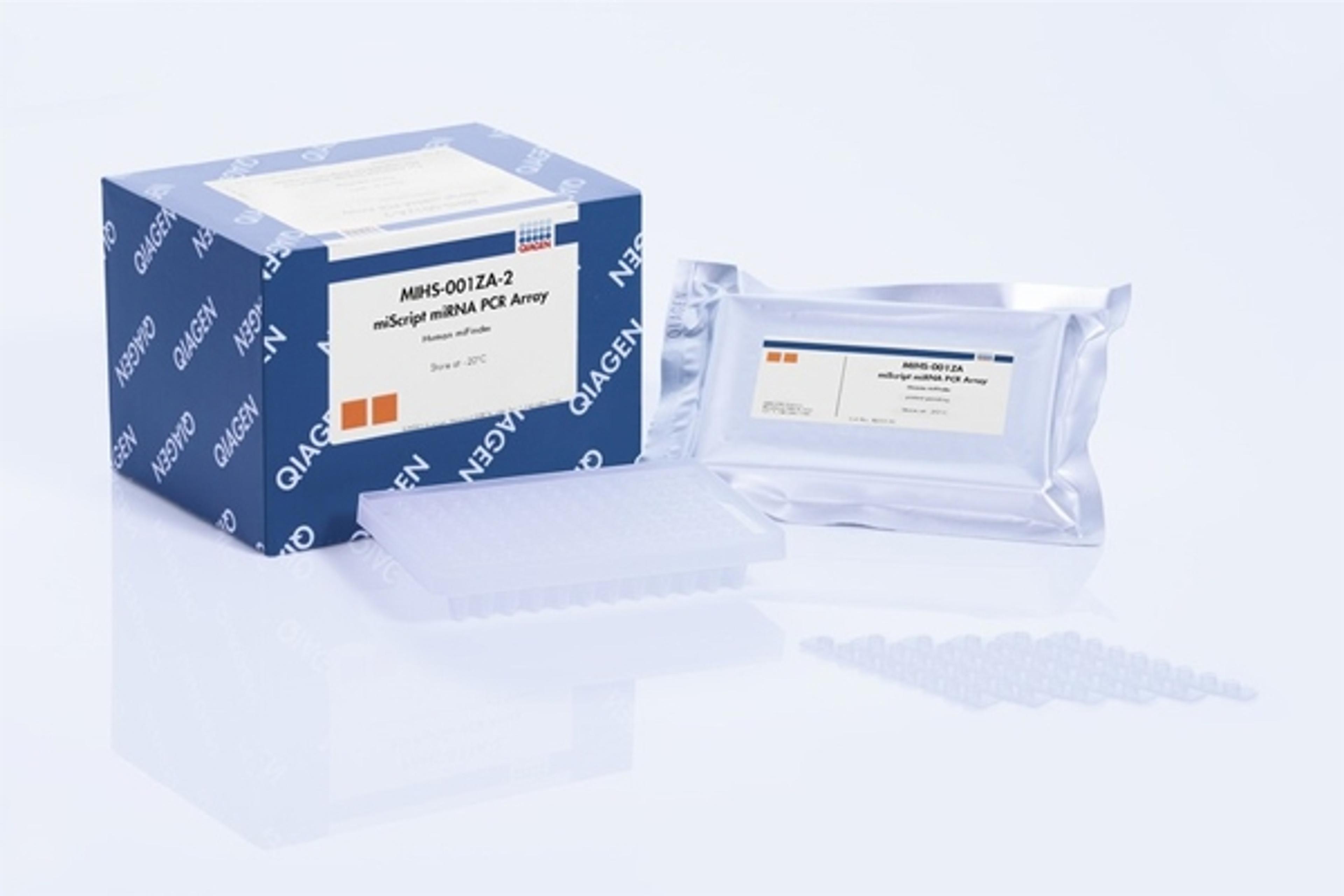Webinar Highlights: Quantitative MicroRNA Expression Analysis in Tissues and Body Fluids
Whole genome profiling using small RNA sequencing, followed by qPCR based validation
16 Jun 2015

Dr. Ariane De Ganck, Product Manager of Transcriptome Services at Biogazelle
MicroRNAs (miRNAs) are small non-coding RNA molecules that play a key role in gene expression regulation. They have critical functions in various biological processes and their involvement in disease biology is well documented. The accurate and reliable detection of miRNAs in challenging samples, such as formalin fixed paraffin embedded (FFPE) tissue samples and body fluids such as serum, plasma, urine, and others, is of interest for the identification of new biomarkers for cancer and other diseases.
In this exclusive SelectScience webinar, Dr. Ariane De Ganck, Product Manager of Transcriptome Services at Biogazelle, Belgium, discusses a combined approach for whole genome miRNA profiling using small RNA sequencing and targeted miRNA validation. Dr. De Ganck also explains the potential use of RNA as biomarkers for cancer, presents case studies for miRNA expression analysis in challenging samples, and describes how the QIAGEN miScript PCR system can be used for targeted miRNA measurement.
Watch the webinar on-demand here, or read on for highlights from the question and answer session with Dr. Ariane De Ganck. Plus, download associated white papers on miRNA profiling from blood and overcoming limiting sample material for miRNA biomarker discovery.
What are the benefits of miRNA profiling?
I see benefits for both studying individual miRNAs as well as doing a genome-wide miRNA profiling study. miRNAs have been shown to be very important negative regulators of gene expression and do this in a time- and place-specific manner. They are crucial in normal development and disease processes. A profiling study is typically done when it’s not known in advance which, and to what extent, miRNAs are involved in your experimental conditions. It is important for a profiling study to measure as many miRNAs and isoforms as possible in order to maximize the chance of finding interesting results.
How much starting sample would I need to profile an entire miRNome?
We typically start our workflow with100 ng of total RNA from tissues, which is equivalent to RNA coming from 2,000-5,000 cells. For body fluids, we start with 200 µL of fluid.
What are your thoughts on using preamplification, and does this affect the reliability of data?
We normally use preamplification when we have a low input amount of material, and we have extensively compared PreAMP versus no PreAMP and have seen very good concordance as the measurement changes among both samples. When you include the preamplificaion step, you really don’t need a lot of RNA, I would say 10 ng of total RNA from tissues and only 10% of the RNA extracted from 200 µL of body fluid. Learn more about overcoming limiting sample material in this white paper.
Can you discuss the normalization step for miRNA expression study in body fluid and suggest a best method?
For body fluid, it’s about normalization and discovery, then you can apply the same kind of normalization in small RNA sequencing. Also, if you use qPCR miRNomes you could apply global mean normalization. The modified global mean normalization on common targets (D’haene et al., Methods in Molecular Biology, 2011) would be the best normalization strategy in body fluid. Learn more about miRNA profiling from blood in this white paper. Plus, discover tips for RT-qPCR data normalization using reference genes in this Biogazelle blog post.
When comparing studies using a normal comparative cohort, what is the cohort size and how is it defined?
This is not a straightforward answer, the larger you take the cohort, the better the chances to obtain statistically significant results. If you need to put number on it, then I would say 20 controls versus 20 patients is the minimum you should start with. The best approach is to perform a dedicated power analysis.
How well can NGS technology be trusted for miRNA Quantification analysis? Or do you always recommend quantifying using qPCR?
We believe in the strength of sequencing technology so it’s not necessary to do a technical validation. However, as I have emphasized during the webinar, it’s necessary to do a biological validation, meaning that you need to validate your results on another, independent cohort, and for that we always use qPCR as an orthogonal method.
What made you choose to use the QIAGEN miRNA platform in the study?
There are a number of interesting characteristics with this QIAGEN platform. First of all, the universal reverse-transcription reaction, also the fact QIAGEN has validated assays for almost the entire miRNome. Also interesting for us was the preampification step, because we have a lot of projects with low input amounts of total RNA. On top of that we like the overall good performance according to the miRNA quality control (miRQC) study and internal evaluations.
Can the QIAGEN miScript system be used for shRNA validation?
If you want to check whether the short hairpin is used to knock down a certain miRNA and you want to check the expression of that miRNA, you can use the QIAGEN miScript technology. On the other hand, if you want to check the expression of your short hairpin RNA, you would need to customize the assay.

